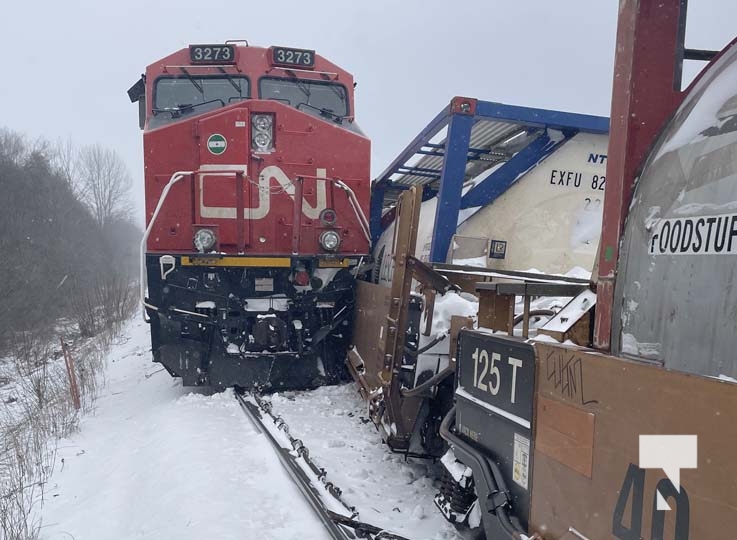lenaitch
Senior Member
There's probably a lot of factors at play, and workplace culture has changed over time. When I was a road warrior copper in small detachments, coverage was often not 24-hour. It was just a given that you were subject to being called out if a call came in. It was completely informal with a lot of give and take between members. When they started trying to organize and schedule it, the wheels started falling off. Later, as a plain clothes investigator (with a good ol' pager) it was just a given that you carried it 24/7. If you didn't want to do that, don't apply for the job.^Transit properties have “spare board” positions where operators’ assignment is to wait in the lunchroom until handed an assignment. It works, because there are enough variables with dead buses, sick calls, and service disruptions that the “couch drivers” don’t actually sit idle to a degree that would be offensive to the taxpayer.
I’m not sure that VIA needs that degree of redundancy in its operation. But railroading seems to be an extreme case where (perhaps because operating workers are deployed irregularly in the routine moments, with no one having any consistency or predictability in hours) rail workers slide off the face of the planet at quitting time, and the inability to achieve call-ins prevents quick response to incidents.
If one compares to say municipal and provincial Hydro workers, one seldom hears that a blackout in bad weather is extended because the workers couldn’t be called in. I could cite plenty of situations where, when the power went out town-wide, such workers just headed to work on the assumption that they would be needed to get the lights back on (of course, their own power might have been off as well, so it was somewhat self-motivated…)
Back in the days of pagers (amazing how dated that now seems), as a management guy I was required as a condition of employment to carry a pager 24/7 on a 2 weeks on/4 weeks off rotation, with the requirement to be able to reach the plant within 90 minutes, fit for duty….. to hold a role in the plant’s emergency contol centre. There was a small stipend paid for this but that’s all.
To be balanced, I am aware of railway RTE’s who have spent this Christmas in a bunkhouse in an away terminal because this week’s weather forced freight operations to be suspended also…. no way to get them home. I’m not suggesting rail workers have it easy, but VIA sits in the middle of these working extremes with most of its crews working a predictable schedule such that the requirement to respond occasionally in emergencies is not unreasonable.
Someone needs to revisit this, because while the knee-jerk reaction of “it was a holiday, so nobody could be reached” may be indicative of current railway culture, it isn’t a valid norm for a service industry where service stoppages can put customers’ health and well being at risk…. nor is it a modal condition of employment in other regulated, unionised industries.
- Paul
Many organizations today tend to treat their employees like a cog, so employees start acting like one, and the collective agreement becomes stone tablets from a mountaintop.
Outside of large divisions like Toronto, when many crew divisions were in relatively small communities I suspect that cobbling together a train crew was a tad easier.
One of the reasons Hydro One et al are able to get crews out in a weather emergency is quite generous provisions for stand-by, on call and overtime. I suspect that with rules about duty and rest time for railway running crews, I doubt similar provisions would be workable. Folks have to remember that if provisions like stand-by place restrictions on how people live their off-duty lives.
Jury-rigging would no doubt entail somebody to crawl under the carriages with tools, knowledge and permission -in a storm. Any equipment that had some kind of dump/bypass provision baked into the design would not likely survive any number of federal and provincial laws.I believe that this is impossible without specially-made (or jury-rigged) equipment. The tanks require pumping to remove the waste, and much like the fuel tanks there are a series of contacts on the hose and outlet that need to connect and talk to each other before the process begins.
I recall reading that Cobourg PS and paramedics attended after someone called 911. I only assumed this was the train with a tree sticking out of it.Emergency services reached the train at 10.30pm, presumably commensurate with an non-casualty incident response triage when causality incidents were occurring on roads all over Ontario.striking this as it was what I recalled reading earlier in the week but can’t find supporting documentation for it now (and one piece I did find indicated the tree strike was after that time)
Last edited:








-MO-10-MINO_GENERIC_WEB_CARDS_TEMPLATE_NEWS-RELEASE-TITLE_EN.jpg)